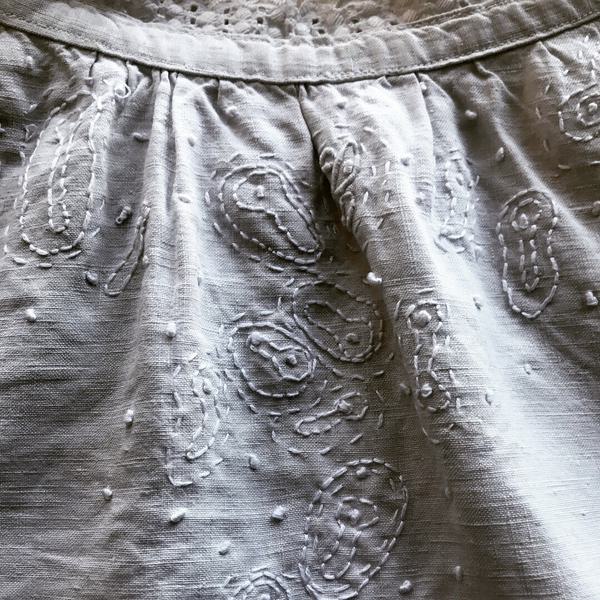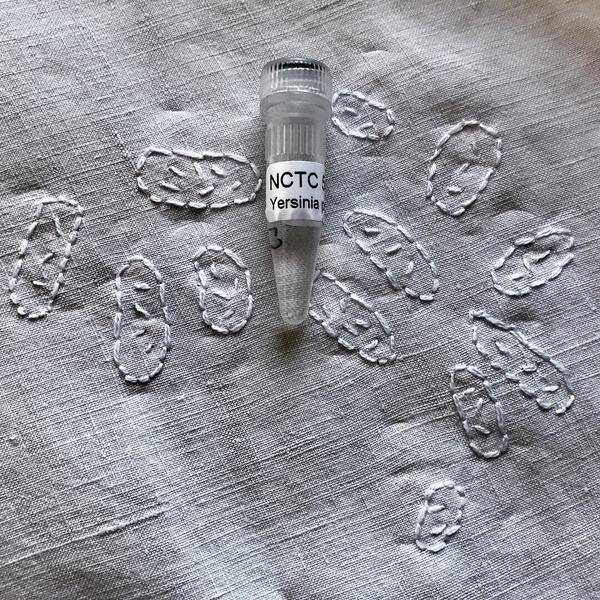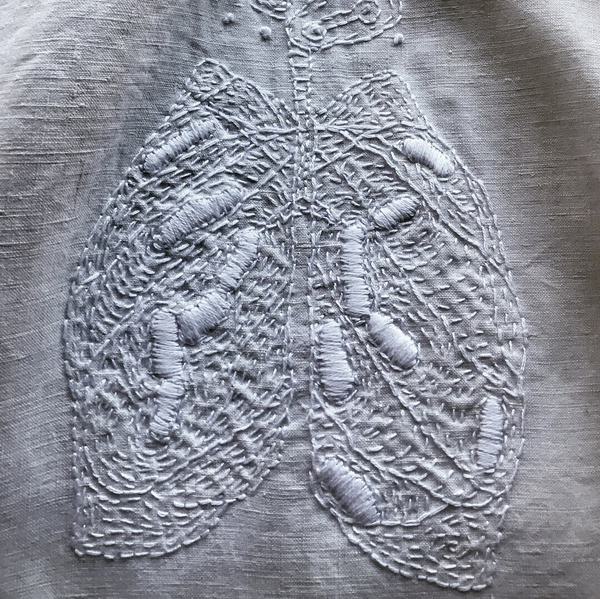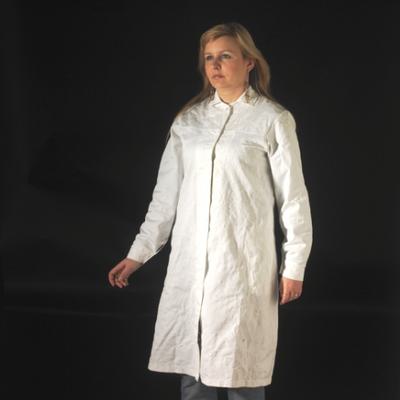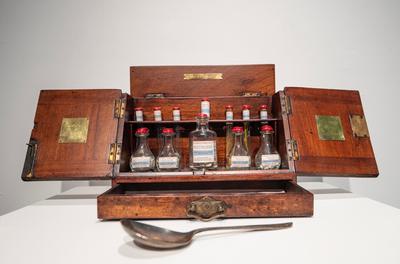Clean Linen
By
Anna Dumitriu
2018
- Craft and Design
- Installation Art
- Mixed Media
- Abstract & Conceptual
- Health & Wellness
- Bioart
- Art Science
- Embroidery
- Bacteria
- New Media
- Linen
- Sciart
- Plague
- Textiles
- Project
- Mourning
Dimensions
70 x 80 cms
“Clean Linen” takes the form of an antique French linen nightgown embroidered with images of the bacteria that cause Plague, tuberculosis, scarlet fever and diphtheria and invisibly impregnated with the extracted DNA of those sublime and historic organisms. In the 17th Century (and later) it was not common practice to wash the body as people believed washing their linen clothes was sufficient (an idea that seems to have originated in France) and that “linen washed the skin through humoral regulation”. This was related to the belief that clothing spread disease, which arose around the time of the Great Plague. Clean linen was specifically used to express cleanliness and respectability even for poorer people who rarely washed their bodies. Linen fibres become stronger when wet and are not damaged by washing, unlike silk and wool. The Yersinia pestis (Plague) and Mycobacterium tuberculosis (TB) DNA was extracted by the artist and her collaborators at the National Collection of Type Cultures and Modernising Medical Microbiology. They are studying these bacteria in the lab using a technique called whole genome sequencing to learn more about them and help fight disease. The DNA is sterile and contains no infective elements but the idea of its presence brings about a sense of unease. Whitework embroidery was a popular pastime for refined women in the same period as it was common for men to be ‘gentlemen scientists’. In this case the two methods are combined.
Anna Dumitriu
Anna Dumitriu
Helping Artists Keep Going
Axis is an artist-led charity supporting contemporary visual artists with resources, connection, and visibility.
